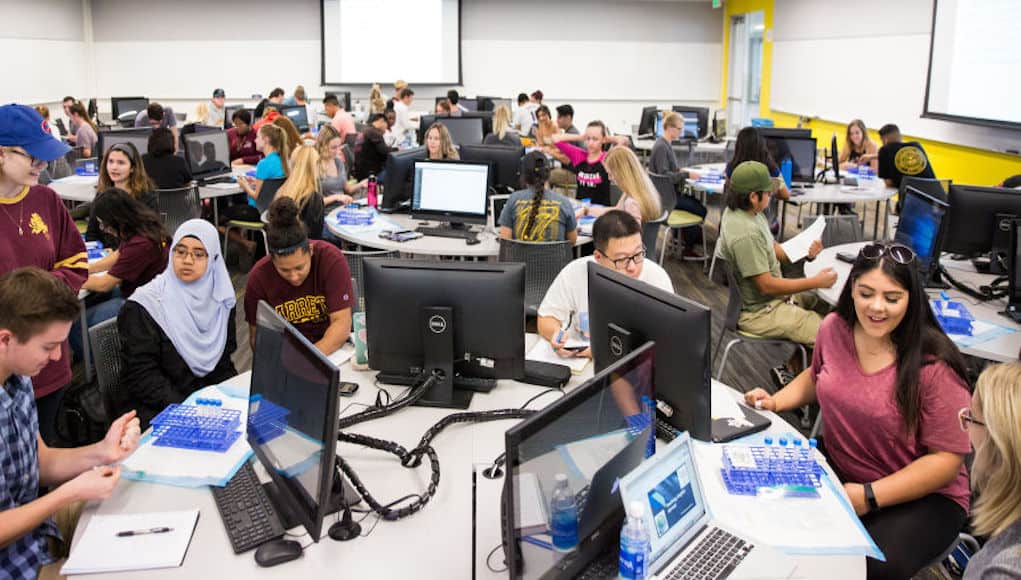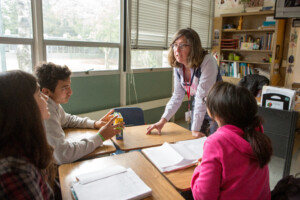Arizona State Accelerates Progress with Adaptive Active Courses

Work on student engagement began in earnest at Arizona State University in 2007. Advisory services were improved. More data was collected and used to improve student supports. Retention rates climbed from 60% to 85%.
To reach a goal of around 90% retention, Vice Provost Arthur Blakemore knew they’d have to get at the heart of learner experience. He launched an adaptive learning initiative and, beginning in 2011, ASU incorporated adaptive software into introductory math courses.
The math team got rid of non-credit developmental math courses and developed an emporium model of blended learning which replaces lecture-style classes with collaborative, activity-based work done in a learning resource center where students access the online course materials. After several iterations, the math team selected ALEKS from McGraw Hill. Rather than in content delivery, faculty work in a problem-solving role.
Students that need more time to complete a course can stretch their enrollment over a second semester.
By focusing on key skills, the ASU math faculty pared down the ALEKS curriculum from 1000 lessons to 320. They embedded faculty developed videos to provide additional assistance.
Branching Out From Math
Dale Johnson, the adaptive program manager for EdPlus at ASU, said the adaptive active model has expanded to other departments. The template is adaptive online learning used to prepare for active learning in class.
The Introduction to Biology course typically has 450 mostly business students and historically had high withdrawal rates. After adopting the adaptive active model, withdrawal rates dropped.
“Students are getting the academic benefit of learning biology and the social benefit of support,” said Johnson.
Instructors benefit from real-time information about where the class needs help. “Instructors see quiz results, know who struggling, and can adapt class time accordingly,” added Johnson.
The shift to adaptive active allows faculty like Dr. Susan Holechek to shift classtime from content delivery to debates about the merits of vaccination.
Starting with a horizontal strategy, Johnson looked for an opportunity to infuse one course in each discipline using the best adaptive tools available. The Learning Objects platform from Cengage is used in Psychology and Economics. Smart Sparrow is used in Habitable Worlds, which explores the formation of stars, planets, Earth and life.
The new opportunity is developing vertical course integrations. For example, Cogbooks, a Scottish startup, provides the adaptive spine of a Biology sequence. The 19 courses on Cogbooks also include History and Philosophy.
The ASU adaptive active blended learning initiative is meeting students where they are and making class time high-value engagement.
“Our goal is the right lesson to right student at the right time,” said Johnson.
For more, see:
Stay in-the-know with innovations in learning by signing up for the weekly Smart Update.
This post was originally published on Forbes.







Tom Vander Ark
ASU will launch a for-profit affiliate to scale corporate partners (like the Starbucks partnership) and likely use some of this adaptive tech. See (rather frantic) Inside HigherEd post https://www.insidehighered.com/blogs/digital-tweed/asu-goes-profits